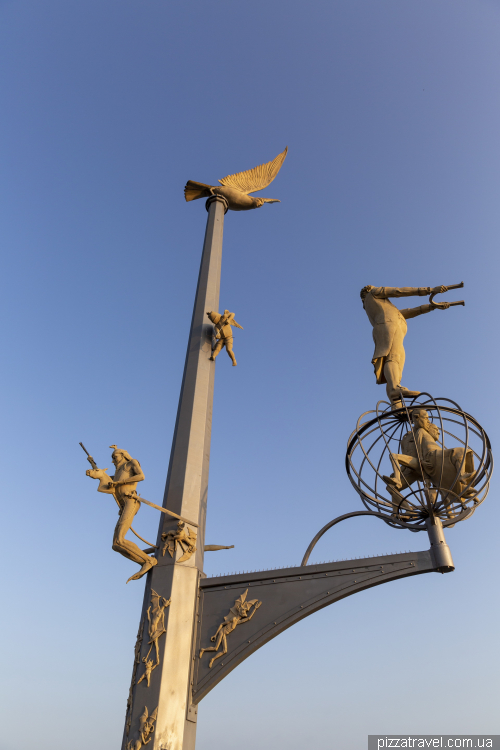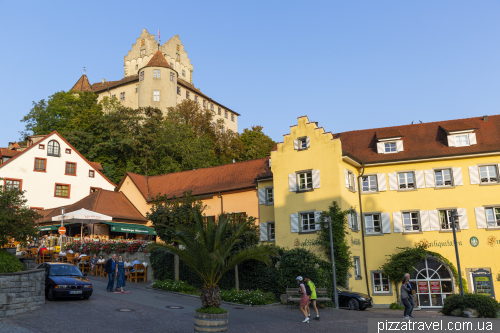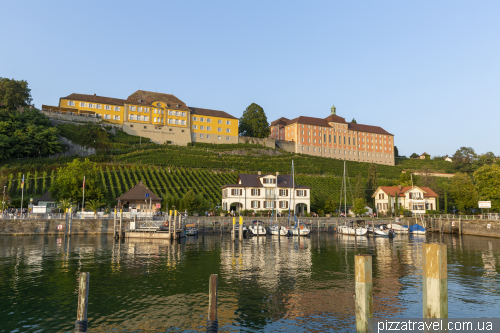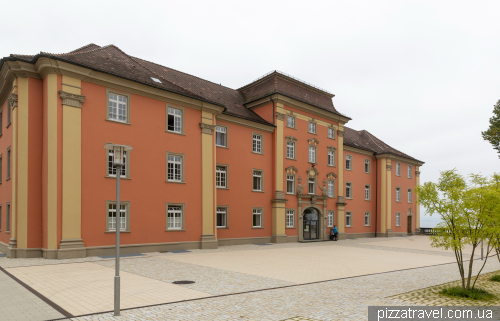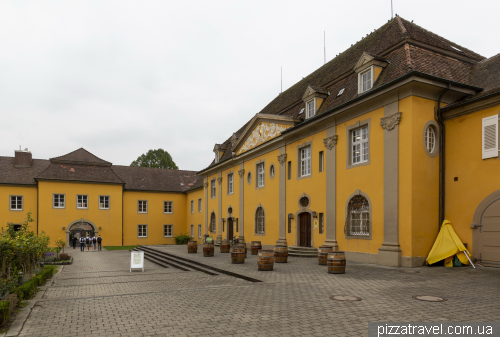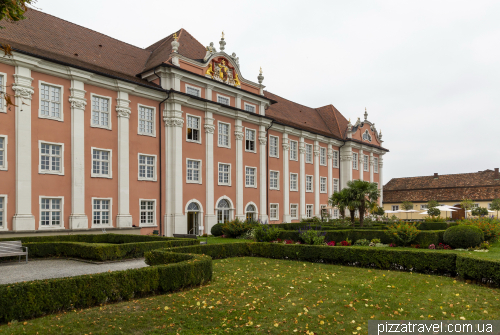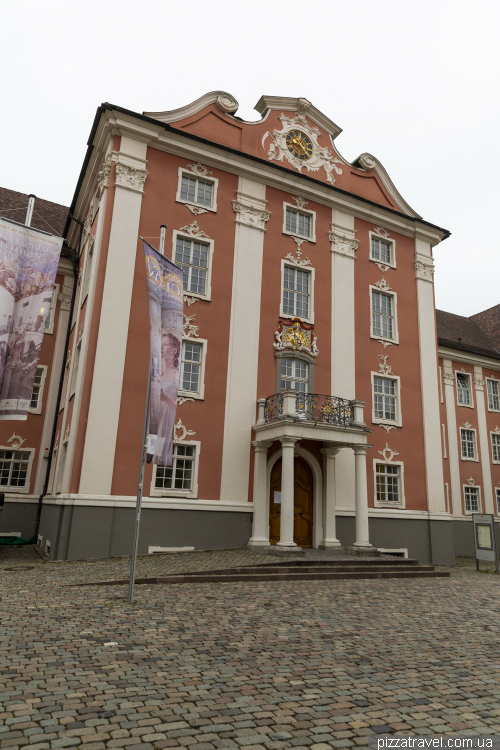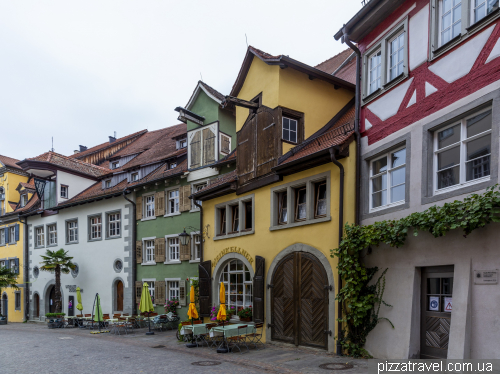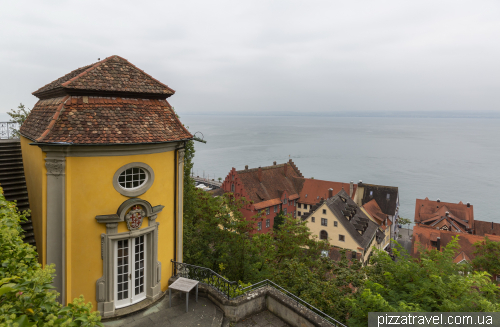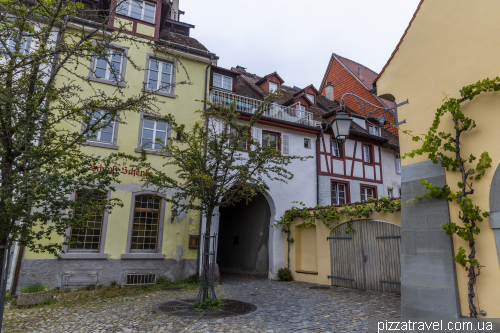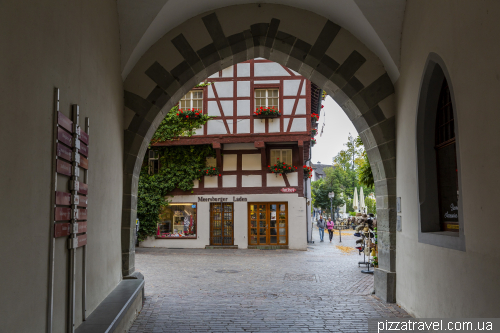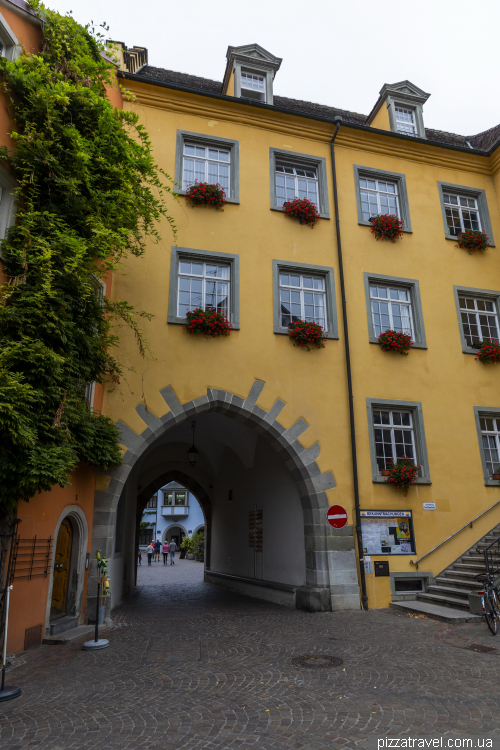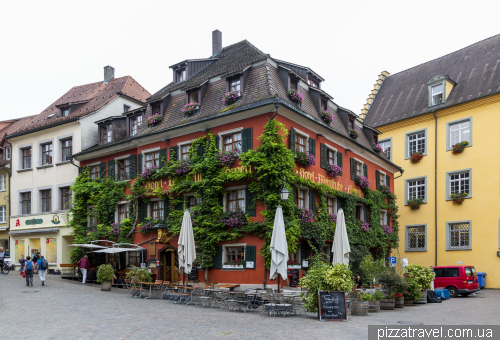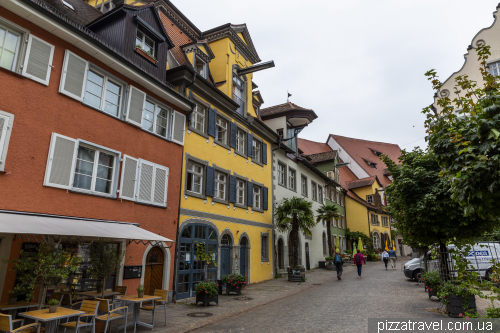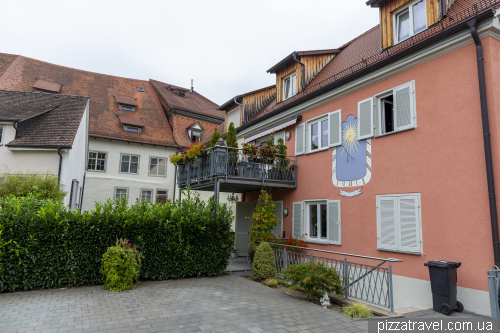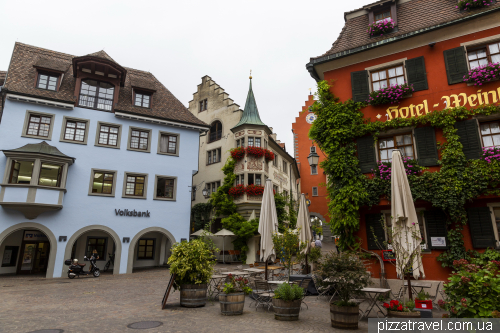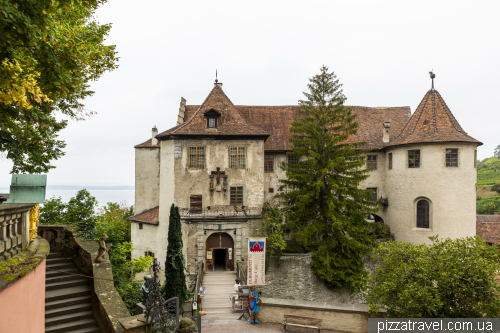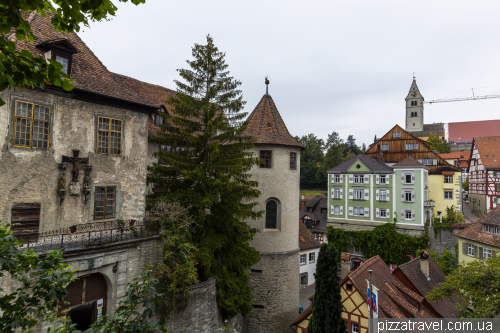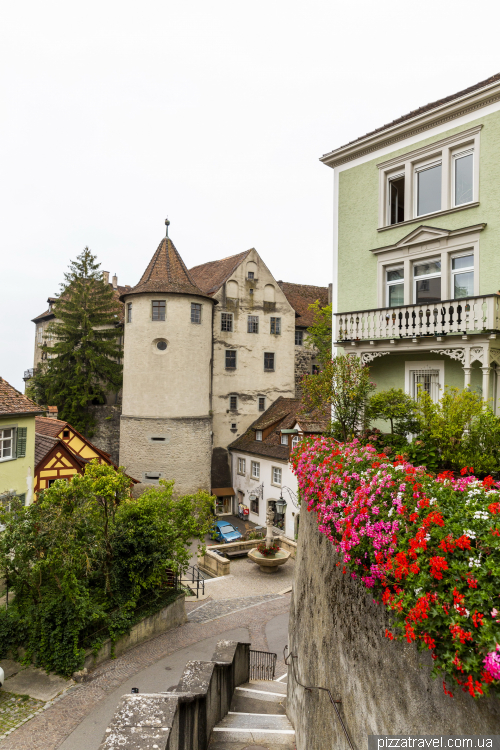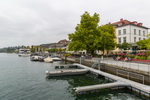The city is divided into two parts, upper (Oberstadt) and lower (Unterstadt). The main development started in 1233, when a market began to be held in the city. In 1260, the upper city was surrounded by a protective wall, from which now only the gate remains. Despite the efforts of citizens, Meersburg did not acquire the status of a Free City, although neighboring cities did.
In the lower part there is a beautiful promenade, built in 1870 to develop tourism.
The beautiful red and yellow buildings on the previous photo are the gymnasium. And earlier it was the Theological Seminary (1725-1734) and the Horse Yard (1760).
The new palace (Neues Schloss Meersburg) was built between 1712 and 1760 in the Baroque style. It hosts an art gallery.
Historic streets in the upper town. Like most other German cities, Meersburg was renovated in the 70s of the 20th century.
In the heart of the city is a castle, the date of foundation of which is unknown. It may well have appeared at the time of the founding of the city in the 12th century. In fact, the name of the city in German is precisely related to the castle on the sea.
There is a great viewpoint (47.694272, 9.269431) in the park, above the town, overlooking the town and the castle.
Kudos to the city administration for one of the best tourist maps we've seen.
Getting there: large covered parking lot is here 47.694223, 9.267106. In the northern part of the city we park here 47.695938, 9.272114. Take the train to Friedrichshafen or Überlingen, then take the bus.


